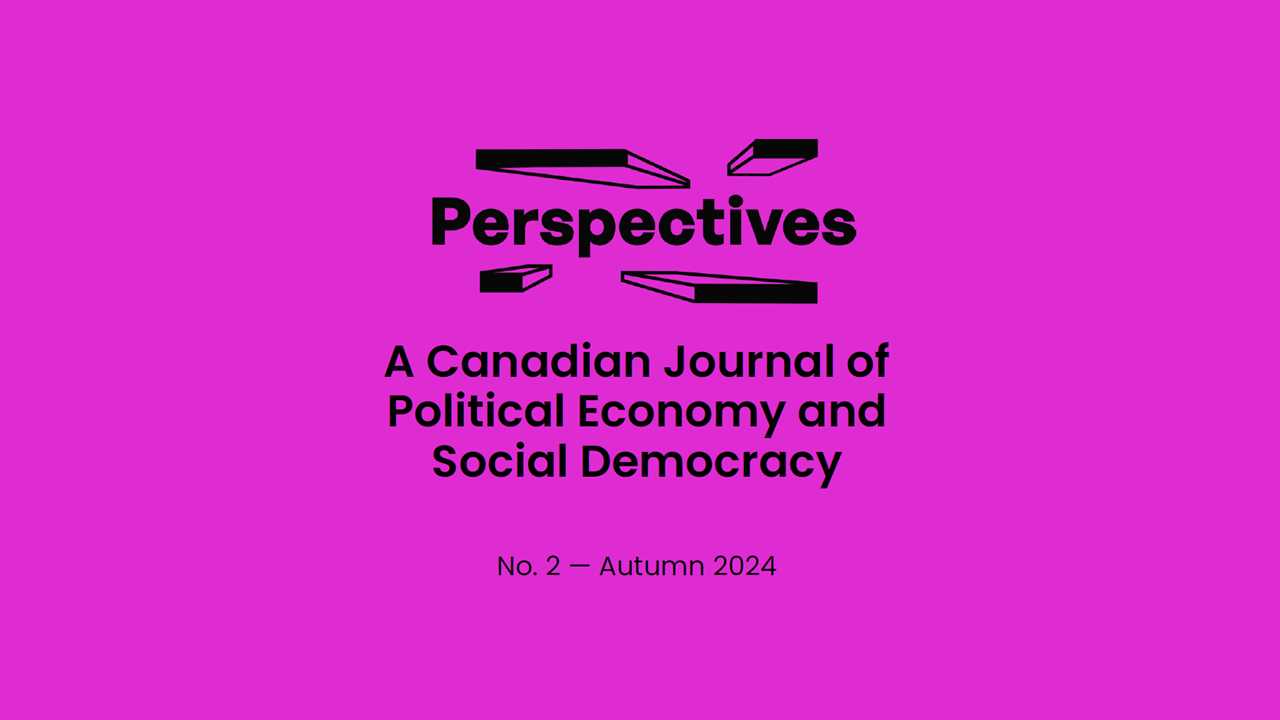Listen to an interview with author Dylana Thompson for more on this article on the Perspectives Journal podcast, available to subscribers on Spotify, Apple Podcasts, YouTube, Amazon Music, and all other major podcast platforms.
Data is essential for shaping government policy. Without it, an issue may as well not exist in the eyes of policymakers. Activists have long drawn attention to the issue of trans deaths, and more recently, politicians have begun to recognize the problem. However, despite other advancements Canada has made in trans rights in recent years, such as the inclusion of gender identity and expression in human rights legislation, there is a lack of systemic data collection on trans deaths. Neglect of this issue has deadly consequences as it impedes efforts to address inequities in mortality rates between trans people and the general population.
This article will highlight the issue of trans deaths and the need for better data collection and analysis. Beginning with a brief history of Trans Day of Remembrance, a day set aside to honour those lost to transphobic violence, this article will then examine what is known about trans mortality rates, drawing on research and lessons from other jurisdictions to be applied to the Canadian context. Particular attention will also be given to the impact of anti-trans policy agendas embraced by provincial conservative governments and the federal Conservative Party of Canada. To conclude, it is recommended that incorporating trans identities into coroners’ reports, and mandating the recording of this data, will be crucial in filling the data gap and laying the groundwork for innovative policy to move trans rights forward.
A Brief History of Trans Day of Remembrance
The first Trans Day of Remembrance (TDoR) was observed in November 1999 with sister vigils held in the US cities of Boston and San Francisco. (Riedel, 31 March 2022) The day was inspired by the separate killings of Rita Hester and Chanelle Pickett, that happened years prior in the same Boston area. There were striking similarities between the killing of these two women, whose murders occurred three years apart. For activist Gwendolyn Anne Smith, these similarities reflected a broader systemic issue. Smith worked to organize the 1999 vigils to raise awareness of those who lost their lives to transphobic violence and push for social change. She also began collecting data, archiving all known homicides dating back to the 1970s. Since the initial vigils, TDoR has become an international day with official recognition from communities, many levels of government, and political leaders around the world.
Trans Mortality Rates and Data Reliability
Since the 1990s, there has been a steady increase in recorded homicides of trans people. This fact cannot be solely attributed to improvements in reporting – since the rise of trans visibility in the mid-2010s, and the anti-trans backlash that followed, homicide rates have doubled in some regions of the United States. (Moeder, 12 October 2022) According to Transgender Europe’s Trans Murder Monitoring Project, 2023 data shows that 321 trans people have been murdered across the globe, and the characteristics of many of the victims share similarities with the murders of Hester and Pickett. In total, 94 percent were trans women or transfeminine; 48 percent whose professions were known were sex workers; 80 percent were racialized; and 77 percent were between the ages of 19-44, with most being under 25. In Canada, between 2008 and 2023, there have been 11 recorded homicides according to the available international data; however, the true number is likely much higher. (Transgender Europe, November 2023)
Data as it stands today provides an imperfect snapshot of the issue of trans homicides, since most jurisdictions lack systemic recording of trans deaths. The Trans Murder Monitoring Project must rely primarily on media reports of incidents to collect its international database. Deadnaming and misgendering (i.e. referring to trans people by their name and pronouns assigned at birth rather than the ones that correspond to their gender) are common practices by police and media, (Rummler, 11 January 2023) as well as death investigators following trans murders. (Walters, Mew & Repp, 2023) The onus often lies on frontline service-providing organizations and communities to monitor media reports and correct the record. However, communities and organizations serving trans populations are not evenly distributed, with urban centres having more community and trans-serving organizations. Notably, in the Boston area where the two murders that inspired TDoR occurred, a high density of trans-serving organizations exist that are able to spotlight deaths and maintain records. (Riedel, 31 March 2022)
There is a clear urban and rural divide, however, in the existence of frontline organizations. In Canada, 2021 Census data indicates that trans people live in non insignificant numbers in rural areas across the country. (Statistics Canada, 27 April 2022) While Canada is the first country to include trans people in census data, as similar survey data collection is unavailable in other countries, this population distribution highlighted in the Canadian context between rural and urban trans people likely exists in other countries. Therefore, it is reasonable to assume that there is an urban bias in reported murders in Canada and around the world. (Stotzer, 2017)
Additionally, some deaths are broadly ignored by the public and fail to garner media attention, such as deaths from violence in prisons. Trans people, especially trans women incarcerated in men’s prisons, face disturbing levels of violence. Therefore, it is not unreasonable to assume that trans deaths in prisons are a systemic issue that is not fully captured by official data. Of the 26 names listed so far in the Human Rights Campaign’s (HRC) 2024 list of recorded trans murders in the United States as of September 2024, only six occurred outside a large urban centre. In total, 38 percent of the individuals identified by the HRC were initially misgendered by the police and media, only to later have the record corrected by HRC or another organization. Notably, one of the non-urban deaths initially misreported was Yella Clark, a trans inmate who was killed by another prisoner in a men’s institution located in rural Louisiana. (Goldberg, 11 June 2024)
Correcting the Record
As more issues facing trans people come to public light, some TDoR events are broadening beyond murders of trans people to include all who died preventable deaths resulting from transphobia such as suicide, drug overdose, death from untreated chronic disease resulting from medical discrimination, and lack of access to gender-affirming healthcare. (Rummler, 20 November 2023) While it is essential not to decentre the primarily Black, Indigenous, and racialized trans women who are murdered each year, there is value in recognizing additional systemic issues that tragically shorten the lives of trans people in Canada and globally. Unfortunately, data on these other forms of death are even more limited than homicide data, and organizations that have broadened their focus on TDoR often only report a few incidents of suicide and other deaths in their messaging for the day.
Given the fact that low levels of social support are a risk factor for suicide, it can be assumed that many trans people who die by suicide have no one to correct the record when media and authorities deadname and misgender. For these deaths in particular, systemic data collection is needed to ensure the scope of the problem of health and wellbeing of trans populations is understood, and aggravating factors are appropriately addressed by government policy.
It is a common approach for activists to raise awareness of trans deaths by focusing on individual victims while neglecting to mention the perpetrators of violence or the complexities of the circumstances of death. (Westbrook, 2020) These individuals are often framed primarily as victims of transphobic hate without an analysis of intersecting systems of oppression that contributed to death. While the rhetorical tactic focusing on hate and violence has allowed trans people to gain recognition as an oppressed group, it oversimplifies the lives of the intersectionally marginalized trans individuals, who often experience extreme violence.
Committing to systemic data collection, such as mandated reporting in coroners’ reports to record trans murders and other preventable deaths accurately, would enable policymakers and activists to develop a more nuanced understanding of both individual cases and broader trends. Better data practices like this would allow for a reframing of trans deaths away from a “transphobia is the cause” narrative, and instead towards a multifaceted, intersectional approach. This deeper understanding would strengthen solidarity across anti-violence movements and could increase the visibility of trans issues to be considered in legislative debates, even when trans people are not explicitly mentioned. For instance, improved reporting of trans deaths in prisons could encourage greater collaboration between trans rights organizations and prisoner advocacy groups, making it more likely that policymakers address trans concerns in discussions around prison reform.
Other Data Points in Trans Wellbeing
While data is limited in Canada, and only now becoming a part of regular survey practices, the information that is available paints a disturbing picture of the precarity of trans life. A 2015 study of trans Ontarians found that 35.1 percent considered suicide and 11 percent attempted suicide in the past year. (Bauer, et. al., 2015) To put this statistic into context, 2.6 percent of Canadians had thoughts of suicide and 0.3 percent attempted suicide in 2019. (Public Health Agency of Canada, 2023) Researchers have found that social inclusion, protection from transphobia, and access to gender-affirming healthcare have significant effects on reducing high rates of suicidal ideation and attempts in trans communities, and therefore, governmental policy has a direct influence on suicidal behaviour among trans people. (Bauer, et. al., 2015) Despite Canada’s commitment to universal healthcare, only Prince Edward Island (CBC News, 21 July 2023) and Yukon (d’Entremont, 18 March 2021) have aligned their gender-affirming healthcare coverage with expert recommendations. (Coleman, et. al., 2022)
Across Canada, only 26 percent of trans people have all their gender-affirming healthcare needs met. (Trans PULSE Canada, March 2020) This statistic is due to the exclusion of coverage of medically necessary gender-affirming procedures, and long wait lists to access the few procedures that are covered. In some cases, the wait times for surgeries can be as long as nine years. (Frohard-Dourlent, Coronel Villalobos & Saewye, 2017) Additionally, there are many barriers to changing identity documents, such as requirements for a letter from a physician and a signed affidavit witness by a lawyer. (JusticeTrans, 2024) If provinces and territories began collecting data on trans suicides, it would be possible to understand how deaths are linked to certain policy decisions, making neglect in areas like healthcare and legal recognition harder to ignore.
Data Saves Lives
Trans youth, who are at exceptionally high risk of suicide, are increasingly becoming targets in the culture war. (Yarr, 14 June 2022) Right-wing governments in New Brunswick and Saskatchewan have introduced policies that will make schools less safe for at-risk trans students. (Farley, 7 June 2024) Alberta has announced they will do the same in addition to banning the use of puberty blockers for trans youth under the age of 16. (Frew, 30 April 2024) The Alberta announcement has been widely condemned by many organizations, including the Canadian Medical Association, which said in a statement that, “[T]ransgender youth have higher rates of mental health issues, including suicidal tendencies, due to stigma that they face. By providing comprehensive health care options, we affirm the dignity and humanity of transgender individuals, reinforcing the notion that everyone deserves access to the medical support necessary for authentic self-expression. We strongly urge governments to consult with healthcare professionals — experts in their field — when considering policy changes related to health care.” (Ross, 20 February 2024)
Still, political decisions to exacerbate the issues with trans health and wellbeing continue across Canada. Conservative Party leader Pierre Poilievre has voiced support for a nationwide ban on puberty blockers for trans youth after the party membership party passed a policy calling for a ban. Advocates in the United Kingdom are pointing to an epidemic in suicides by trans youth following restrictions to access to gender affirming healthcare, which could be the result in Canada as well if these policies were to be implemented. (Villarreal, 15 April 2024) Additionally, recent research from the United States shows that trans youth suicide attempts have risen as much as 72 percent since the onslaught of anti-trans legislation targeting healthcare for trans youth and other fundamental rights. (Lee et al., 21 June 2024) Systemic data collection is needed to counter the political scapegoating of trans youth and to make clear the adverse effects of these poor policy choices. If coroners were required to report trans suicides, the data would likely show an increase in suicides following the implementation of anti-trans policies. Without data, conservative politicians across Canada can continue using trans youth as scapegoats, while numerous, uncounted deaths remain invisible. These policies are already being pushed forward in provinces where conservatives have long been in power, distracting from the poor economic performance and social outcomes in their provinces on issues such as affordability and jobs. Saskatchewan has invoked the notwithstanding clause to protect its anti-trans policies from court challenges, and Alberta and New Brunswick have also expressed a willingness to do the same. Public backlash has aided the defence against the frivolous use of the notwithstanding clause by the provinces, but data is desperately needed to help inform public opinion about the deadly consequences of these policies.
As mentioned, prisons are another area where trans people face extreme violence. A study commissioned by the Department of Justice found that violence, threats, and harassment from guards and other prisoners are everyday experiences for incarcerated trans people in Canada. (Hébert, et. al., 2022) Some participants even reported experiencing death threats. A majority of incarcerated trans people in Canada are held in prisons that are discordant with their gender. (Dalwood, 9 January 2024) Reliable data on the issue of sexual violence against trans women in men’s prisons is lacking in a Canadian context because Canada has not historically collected data on the issue of prison sexual violence. However, data from other jurisdictions paint a stark picture. Sexual violence in prisons is a widespread problem. However, trans women are not higher-risk offenders than other inmates. Ministry of Justice data from the United Kingdom shows that of the 122 reported sexual assaults in women’s prisons in the 2010s, only five were perpetrated by trans women (on average, a sexual assault by a trans woman once every two years). (Parsons, 21 May 2020) Meanwhile, trans women are sexually assaulted in UK men’s prisons nearly every month. In Canada, trans inmates are often placed in solitary confinement to prevent violence from other inmates, a practice that is considered torture by human rights experts. (UNHCR, 28 February 2020) Some legislation in Canada such as the BC Coroner’s Act require an automatic investigation after deaths in prisons, but appropriate record keeping of trans deaths in prisons are not required. Rudimentary changes in practice are needed to know the number of lives cut short by transphobic prison policy, which to guide substantive reform.
A Path Forward for Policy Change
Murder, suicide, and death in prisons are just some of the many causes of death that coroners’ reports would capture if reporting of trans identity were mandated by policy. One American study found that the all-cause mortality rate of trans people is twice that of the general population. (Hughes, et. al, 2022) This discrepancy is due to a variety of factors, including poverty, chronic illness, substance use, self-harm, and violence. Canadian census data supports these findings as the average age of trans Canadians is about a decade younger than the average age of the general population, potentially indicating a shorter average lifespan. (Statistics Canada, 27 April 2022) Systematic collection of trans-death data in coroners’ reports will allow for the identification of trends in deaths that are potentially not on the agenda of activists and policymakers, normally focusing on violent incidents rather than other socioeconomic determinants of health, allowing for innovative solutions to address this inequity in death rates.
The call for better data on trans deaths is not new. In 2013, the Ontario’s Coroner’s Office called for research into suicides of LGBT youth; (Pinfold, 3 June 2013) that same year, there were calls for the British Columbia Coroner’s Office to start recording data on LGBT youth who died by suicide. (Hainsworth, 1 October 2013) Despite this, academics noted in a 2015 study that it is impossible to get an accurate measurement of trans deaths by suicide and other forms of deaths in Canada because death investigators do not systemically record information on trans identities in death reports. (Bauer, et. al., 2015) Recently, during roundtable discussions in British Columbia on health equity for BIPOC 2SLGBTQI+ people, an Indigenous trans woman called for better reporting of murders and other deaths in coroners’ reports. (Health Equity Collaborative, 2021). If Canadian jurisdictions were to begin collecting this data, they would not be the first as it has already been done elsewhere. In 2021, California launched a three-year pilot project to track trans deaths in coroners’ reports. (Anguiano, 23 September 2021) The results of this pilot project should soon be made available, making it easier for policymakers in Canada to implement similar policies. Research shows that training death investigators to identify trans people post-mortem is feasible, making this a simple policy change that could be a critical step toward fulfilling the promise of equality for trans people in Canada and shaping policy that allows trans people to live long and fulfilling lives. (Haas, et. al. 2019)
References
Click to expand for a full list of references cited in this article.
Anguiano D (September 23, 2021) “California will track violent deaths of LGBTQ+people in nationwide first,” The Guardian. Available: https://www.theguardian.com/us-news/2021/sep/23/california-lgbtq-deaths-track
Bauer G, Scheim A, Pyne J, Travers R & Hammond R (2015) “Intervenable factors associated with suicide risk in transgender persons: a respondent driven sampling study in Ontario, Canada,” BMC Public Health, 15, 525.
Coleman E, et. al. (September 2022) “Standards of Care for the Health of Transgender and Gender Diverse People, Version 8,” International Journal of Transgender Health, 23(51), pp, 51-5258.
Dalwood C (January 9, 2024) “Canada’s prison system is still vastly transphobic,” Xtra. Available: https://xtramagazine.com/power/politics/canada-prison- system-transphobic-261827
d’Entremont D (March 18, 2021) “Yukon’s new gender-affirming care policy is most comprehensive in Canada, experts say,” CBC News. Available: https://www.cbc.ca/news/canada/north/yukon-gender-affirming-comprehensive- 1.5953126
Farley S (June 7, 2024) “N.B. seeks to intervene in Saskatchewan gender-identity case similar to Policy 713,” CBC News. Available: https://www.cbc.ca/news/canada/new-brunswick/new-brunswick-seeks-intervenor-status-saskatchewan-gender-1.7228744
Frew N (April 30, 2024) “Premier’s announcement on transgender policies surprised Alberta Health Services advisory group,” CBC News. Available: https://www.cbc.ca/news/canada/edmonton/alberta-ahs-transgender-policies-danielle-smith-1.7186280
Frohard-Dourlent H, Coronel Villalobos M & Saewyc E (2017). A survey of experiences with surgery readiness assessment and gender-affirming surgery among trans people in Canada: Focus on British Columbia. Vancouver, BC: Stigma and Resilience Among Vulnerable Youth Centre, School of Nursing, University of British Columbia
Goldberg S (June 11, 2024) “Honoring Yella (Robert) Clark Jr., transgender inmate killed in Louisiana,” Human Rights Campaign. Available: https://www.hrc.org/news/honoring-yella-robert-clark-jr-transgender-inmate-killed-in-louisiana
Haas A, Lane A, Blosnich J, et. al. (February 2019) “Collecting Sexual Orientation and Gender Identity Information at Death,” American Journal of Public Health, 109(2), pp. 255-259.
Hainsworth J (October 1, 2013) “BC coroners urged to investigate sexual orientation in youth suicide,” Xtra. Available: https://xtramagazine.com/power/bc-coroners-urged-to-investigate-sexual-orientation-in-youth-suicide-54097
Health Equity Collaborative (2021) Believe Me. Identifying Barriers to Health Equity for Sexual and Gender Diverse Communities in British Columbia. Available: https://peernetbc.com/wp-content/uploads/2021/01/HEC-Final-Report-WEB.pdf
Hébert W, Butler Burke N, Santini T, Suerich-Gulick F & Barile D (2022) A Qualitative Look at Serious Legal Problems: Trans, Two-Spirit, and Non-Binary People in Canada, Department of Justice, Canada.
Hughes L, King W, Gamarel K, et. al. (June 2022) “Differences in All-Cause Mortality Among Transgender and Non-Transgender People Enrolled in Private Insurance,” Demography, 1;59(3), pp. 1023-1043.
Human Rights Campaign (September 2024) Fatal Violence Against the Transgender and Gender-Expansive Community in 2024. Retrieved: 30 September 2024. Available: https://www.hrc.org/resources/fatal-violence-against-the-transgender-and-gender-expansive-community-in-2024
JusticeTrans (2024) Find Legal Info. Website Accessible: https://justicetrans.org/legal-info/#on
Lee W, Hobbs J, Hobaica S, DeChants J, Price M, Nath R (2024) “State-level anti-transgender laws increase past-year suicide attempts among transgender and non-binary young people in the USA,” Nature Human Behaviour, 1-11.
Moeder N (October 12, 2022) “Number of trans homicides doubled over 4 years, with gun killings fueling increase: Advocates,” ABC News. Available: https://abcnews.go.com/US/homicide-rate-trans-people-doubled-gun-killings-fueling/story?id=91348274
Parsons V (May 21, 2020) “Ministry of Justice dispels bigoted myths around trans prisoners and sexual assault with cold, hard and indisputable facts,” PinkNews. Available: https://www.thepinknews.com/2020/05/21/trans-prisoners-victims-sexual-assault-more-than-perpetrators-ministry-of-justice-liz-truss/
Pinfold C (June 3, 2013) “Canada: Coroner’s Office urges research on suicide in LGBT teens,” PinkNews. Available: https://www.thepinknews.com/2013/06/03/canada-coroners-office-urges-research-on-suicide-in-lgbt-teens/
Riedel S (March 31, 2022) “Remembering Rita Hester, Who Changed What It Means to Remember Trans Lives,” Them. Available: https://www.them.us/story/rita-hester-trans-remembrance-visibility-memorial
Ross K (February 20, 2024) “CMA strongly opposes government efforts to restrict access to care,” Canadian Medical Association. Available: https://www.cma.ca/about-us/what-we-do/press-room/cma-strongly-opposes-government-efforts-restrict-access-care
Rummler O (January 11, 2023) “‘They’re erased’: When trans people are misgendered after death, the consequences extend beyond paper,” The 19th. Available: https://19thnews.org/2023/01/trans-people-misgendering-death-certificates/
Rummler O (November 20, 2023) “On Trans Day of Remembrance, some advocates are honoring lives lost to more than homicide,” The 19th. Available: https://19thnews.org/2023/11/trans-day-remembrance-tdor-2023/
Statistics Canada (April 27, 2022) “Canada is the first country to provide census data on transgender and non-binary people,” The Daily. Available: https://www150.statcan.gc.ca/n1/daily-quotidien/220427/dq220427b-eng.htm
21 Perspectives: A Canadian Journal of Public Health Agency of Canada (September 1, 2023) Suicide in Canada: Key statistics (infographic). Available: https://www.canada.ca/en/public-health/services/publications/healthy-living/suicide-canada-key-statistics-infographic.html
Stotzer R (September 2017) “Data Sources Hinder Our Understanding of Transgender Murders,” American Journal of Public Health, 107(9), pp. 1362-1363.
Transgender Europe (November 13, 2023) “Trans Murder Monitoring 2023 Global Update,” Trans Murder Monitoring Research Project. Available: https://transrespect.org/en/trans-murder-monitoring-2023/
Trans PULSE Canada (March 2020) “Report – Health and health care access for trans and non-binary people in Canada,” No. 1 of 10. Available: https://transpulsecanada.ca/results/report-1/
Villarreal D (April 15, 2024) “Trans youth dying in suicide “epidemic” as UK increasingly restricts gender-affirming care,” LGBTQ Nation. Available: https://www.lgbtqnation.com/2024/04/trans-youth-dying-in-suicide-epidemic-as-uk-increasingly-restricts-gender-affirming-care/
Walters J, Mew M & Repp K (January/February 2023) “Transgender and Nonbinary Deaths Investigated by the State Medical Examiner in the Portland, Oregon, Metro Area and Their Concordance With Vital Records, 2011-2021,” Journal of Public Health Management and Practice, 29(1), pp. 64-70.
Westbrook L (2020) Unlivable Lives: Violence and Identity in Transgender Activism, University of California Press.
Yarr K (June 14, 2022) “Transgender youth 5 times more likely to attempt suicide, study finds,” CBC News. Available: https://www.cbc.ca/news/canada/prince-edward-island/pei-transgender-youth-suicide-1.6487787
.(July 21, 2023) “New services added under P.E.I.’s gender-affirming care policy,” CBC News. Available: https://www.cbc.ca/news/canada/prince-edward-island/pei-cbc-gender-affirming-surgery-voice-feminization-1.6913980







